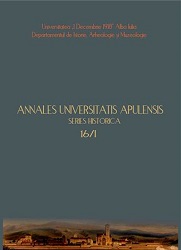Abuse of power, corruption, and anticorruption in the functioning of the road system of medieval Transylvania
Abuse of power, corruption, and anticorruption in the functioning of the road system of medieval Transylvania
Author(s): Oana TodaSubject(s): Archaeology
Published by: Editura Mega Print SRL
Keywords: road administration; toll; abuse of power; over-taxation; illegal road; familiars
Summary/Abstract: Any discussion of the organization and administration of the medieval road system in Transylvania automatically raises the issue of illegal actions related to its functioning. These cover a wide range of manifestations, from common robbery and banditry to the more complex aspects of corruption within administrative structures and the abuse of economic power and/or social status by certain groups and individuals. These caused disarray within the traffic system through over-taxation, the introduction of fake tolls, illegal use of certain road segments, and the violation of traffic regulations and tax exemptions. The neglect of road tracks and river crossings by those responsible for their upkeep also generated problems. This paper studies transgressions of the rules and regulations governing the road system, based on the decrees issued by the Hungarian Kingship from the mid-fourteenth to the mid-sixteenth century, with particular focus on decrees issued by Kings Louis the Great, Sigismund of Luxemburg and Matthias Corvinus. It also explores judicial rulings resolving complaints regarding their implementation. Both the royal decrees, which contain repeated stipulations attempting to enforce the same laws, and documents dealing with resolution of transgressions reflect the ongoing problems experienced in implementing a safe and fair transportation system, and the difficulty of enforcement when many of those responsible for judging transgressions were themselves beneficiaries of road tolls. This article analyses these documents in order to create a general picture of the frequency and nature of corrupt practices at a provincial level, and examines the legal solutions employed to counter them during the Middle Ages.
Journal: Annales Universitatis Apulensis Series Historica
- Issue Year: 20/2016
- Issue No: 1
- Page Range: 41-60
- Page Count: 20
- Language: English
- Content File-PDF

